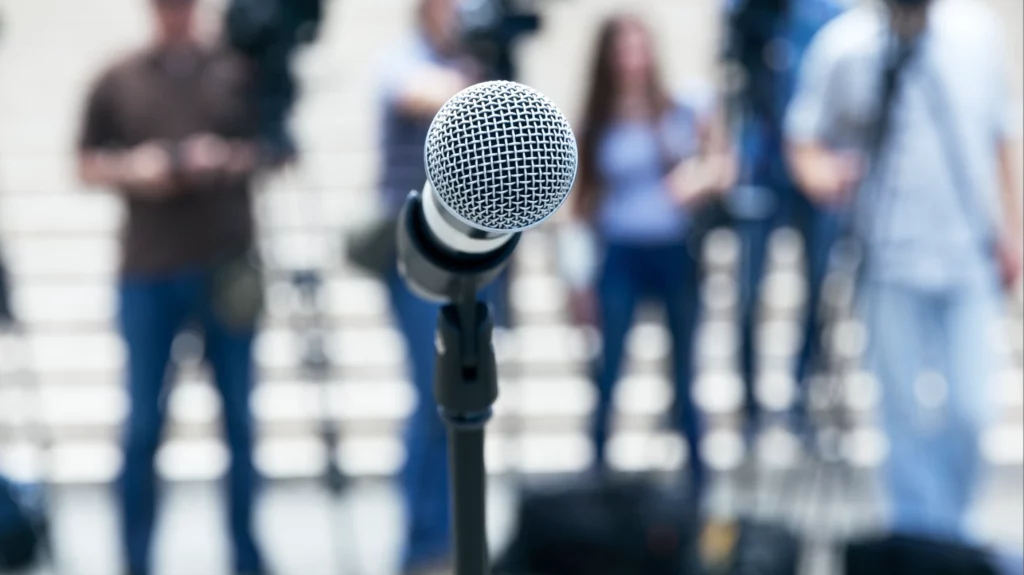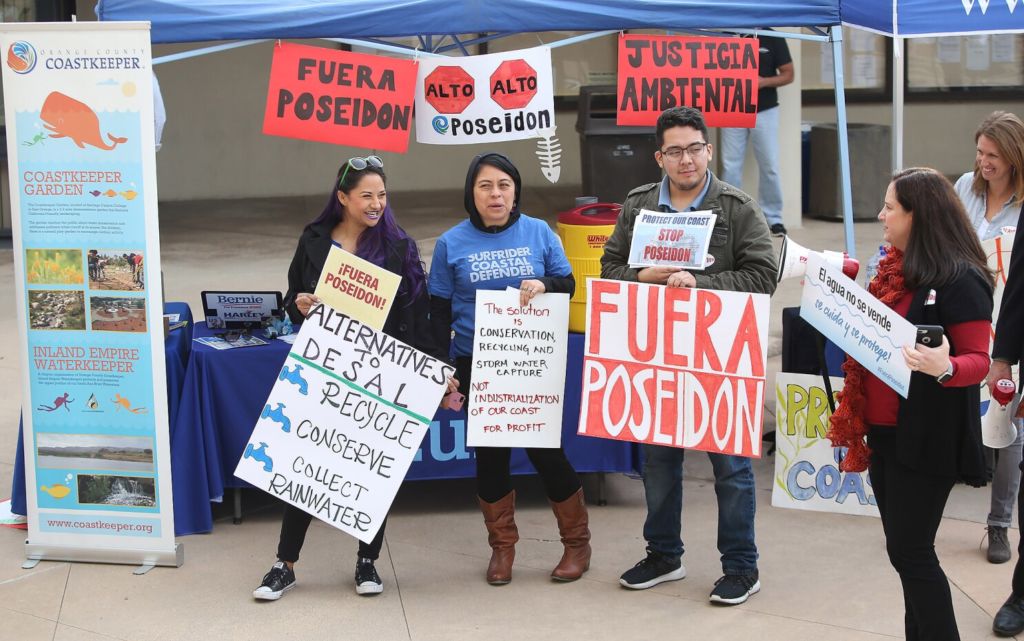
Thank you to the engaged crew who joined us for our virtual workshop on planning press events!
Why put the time and energy into press conferences, rallies, or media tours? We know the media landscape is as fragmented as ever, making it more challenging to reach into people’s news bubbles, but the majority of adults in the U.S. get their news online (86%) and on television (68%). Visually compelling stories that make the rounds on social media or are covered by broadcast TV are an important way to reach new audiences, educate, and mobilize.
The elements of an event-worthy moment
In short, events are a great tool! But, they take your time, talent, treasure, and testimony to pull off. If you can convincingly check off most of these elements, I say you’re on the right track.
- News Hook: To use a fishing metaphor, the audience is the fish and the hook is the interesting angle or new information that reels them into a story. A few examples include new research, milestones, a critical decision point, or conflict.
- Timely: Galvanizing support before a big vote, acknowledging the anniversary of a flood or fire, or responding to a breaking news story? A newsworthy event is one that is connected to a moment in time.
- Visual storytelling: Someone should get the idea of your message from a picture of your event. Visuals are also crucial to generating TV interest. Think about how to use your location as a storytelling backdrop, include signage, and think outside the box with creative props and movement.
- Compelling speakers: The lineup of an event can help tell your story and draw media interest. You can try to get a VIP, focus on the voices of those directly impacted by an issue, demonstrate the broad nature of a coalition, or showcase unlikely allies through your speakers.
- Call to action: What are you asking the reader or a decision maker to do? Your speakers and the visuals at your event should be synched up with a direct call to action.

Thinking about a virtual event?
In today’s environment, the virtual press conference is a great option if you are missing one of the above elements. The downside is virtual events are less TV friendly but they can be quicker to pull together and require a shorter time commitment from speakers and journalists. Here’s how we think about when holding a virtual press event makes sense:
- If there are safety considerations due the pandemic or, for example, you are responding to a natural disaster, virtual is the best option to keep people out of harm’s way.
- If you’ve got great speakers and new information, but lack the visuals or location to tell your story, a virtual press conference is a great option. This is especially true if you have digital media (images or charts) that complement a spoken presentation.
- If you’re got great speakers but they are spread out or your VIP can only join virtually, then this option makes the most sense. Additionally, if you are pitching a story to media that are spread out across a state or nationally, a virtual event would allow for more participation from the press.
- If you want to get in front of an issue a virtual “media briefing” is a great option. At the Water Hub we’ve successfully hosted several issue briefings for reporters on Zoom when there wasn’t a specific call to action or critical decision point but we knew we wanted to educate reporters about an emerging (or seasonal) issue and introduce them to new experts.
Making the most of an event
Lastly, we shared our pointers for getting the media to show and how to make the most of an event regardless:
- Your media advisory (see our template here) is your tool to invite the press to an event and quickly communicate why an event is newsworthy and all the details in an easy to read format. Keep it short! This is a teaser to generate interest, not a history paper on an issue. Bonus points if you can include your call to action in the headline!
- Tailor your outreach and don’t spam journalists (following up once via phone and email is expected but don’t wear out your welcome). Reporters are people you are building a rapport with over time, not anonymous email addresses.
- Don’t forget to pitch your visuals. You’ll likely have better luck getting the eye of a TV assignment editor if they can easily understand what an event will look and sound like.
- Follow up after the event. Send a press release — including a description of the event and quotes from your speakers that include the call to action — to both folks who attended and those who didn’t. You can generate media coverage by sharing photos and videos from your event with news outlets.
- Create your own content. A small investment in live streaming an event and getting quality photo and video allows you to spread the word yourself. Below is a great example. We partnered with Community Water Center to document a recent rally for water affordability in Sacramento and created video content for social media to keep up the pressure for their campaign.
We urge the Governor to fund a water affordability program. It’s time to fund a universal water affordability program for low-income households in California. #SB222 pic.twitter.com/fXy4IHUgFr
— CommunityWaterCenter (@CWaterC) June 13, 2022
Summing it up
Press events are a great way to generate buzz and mobilize support for your work. They take a lot of time and energy and are best deployed when you can incorporate all the elements of compelling events: news hook, timely, visual storytelling, compelling speakers, and a call to action.
Missed the training? Watch the recording here:
To keep up with our team and get the latest communications resources or workshops, follow us on Twitter at @Water_Hub or sign up for our monthly-ish newsletter, the Water Cooler.